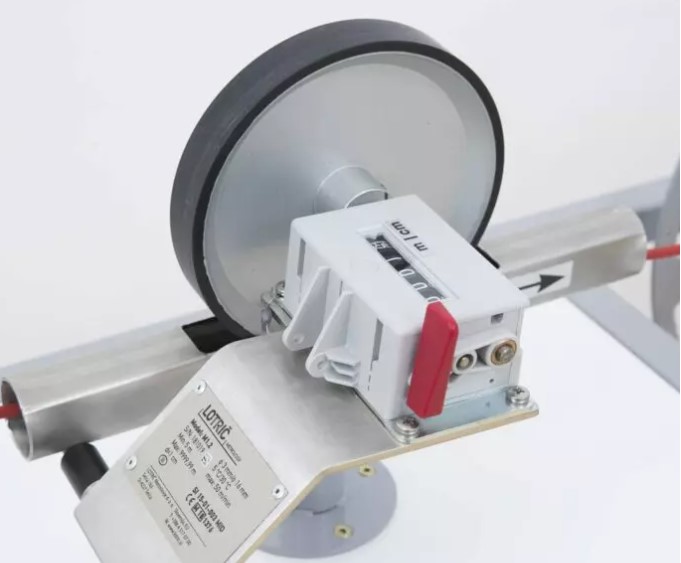Electrical cable measurement is a critical aspect of ensuring safety, functionality, and compliance with electrical standards in the UK. Whether you’re a DIY enthusiast, a homeowner tackling small electrical projects, or a professional electrician, understanding how to measure electrical cable properly is vital.
Proper measurement guarantees that the cable can handle the intended current load, preventing overheating and potential electrical hazards. This guide will delve into the various methods and tools used to measure electrical cable in the UK, covering both common and specialized applications.
This guide will cover all the key points about measuring electrical cables in the UK, the tools you’ll need, and the steps to do so correctly. It will also explain the importance of ensuring compliance with UK electrical regulations.
Understanding Cable Types and Units
Before embarking on measurements, it’s essential to familiarize yourself with the different types of electrical cable commonly found in the UK and the units used to express their dimensions.
Common Cable Types:
- PVC (Polyvinyl Chloride) Cable: A versatile and widely used type, offering good insulation properties and resistance to moisture.
- SWA (Steel Wire Armoured) Cable: Provides mechanical protection and is suitable for outdoor installations or areas prone to damage.
- T&E (Twin and Earth) Cable: A popular choice for domestic wiring, consisting of two conductors (live and neutral) and an earth wire.
Units of Measurement:
- Millimeters (mm): Used to measure the diameter of the cable’s outer sheath.
- Square Millimeters (mm²): Used to express the cross-sectional area of the individual conductors within the cable. This area determines the cable’s ampacity (current-carrying capacity).
- Amperes (A): The unit of electrical current. The cable’s ampacity indicates the maximum current it can safely carry without overheating.
Tools Needed to Measure Electrical Cable
Accurate measurement requires specific tools. Here’s a list of what you’ll need:
- Measuring Tape: For determining the length of the cable.
- Caliper or Micrometer: Used to measure the diameter of the cable, especially when precise measurement is required.
- Cable Gauge: A tool specifically designed to measure the thickness (CSA) of the cable’s conductor.
- Multimeter: While optional, a multimeter can be useful to check the resistance or electrical properties of a cable, ensuring it’s fit for use.
Having the right tools is essential for getting precise measurements, especially if you’re dealing with heavy-duty or high-voltage installations.
Steps to Measure Electrical Cable
Now that you understand the basics, let’s get into the details of how to measure electrical cables accurately.
Measuring the Length of the Cable
The first step is determining how much cable you need. This is often a straightforward task but can become tricky when measuring in tight spaces or over long distances.
Steps to Measure Cable Length:
- Uncoil the Cable: If you’re working with a coil of electrical cable, it’s important to unroll it completely before measuring. Coiling can cause inaccuracies in measurement.
- Use a Measuring Tape: Lay the measuring tape alongside the cable and stretch it from one end to the other. For large installations, you may need a partner to hold one end of the tape.
- Mark the Required Length: Once you’ve measured, mark the length needed using a marker or tape. Cut the cable carefully to avoid fraying or damage.

Image source: lotric.si
Tips for Measuring in Tight Spaces:
- If you’re running cable through walls, measure from the entry point to the outlet and add extra length for ease of installation.
- For complex setups involving bends or turns, add a buffer of 10-15% to account for these variables.
Measuring the Diameter of the Cable
The diameter of the cable, also known as the overall thickness, is important for ensuring that the cable fits through conduits or is compatible with electrical fixtures.
Steps to Measure Cable Diameter:
- Use a Caliper or Micrometer: Gently place the caliper or micrometer around the cable. Ensure that you’re not squeezing the cable too tightly, as this could give a false reading.
- Avoid Measuring Over the Insulation: Electrical cables are usually insulated, so you need to take this into account. Make sure to measure only the outer diameter, without compressing the insulation.

Image source: cpcablemachine
Calculating the Cross-sectional Area (CSA)
The cross-sectional area (CSA) of the cable determines its current-carrying capacity. This is a crucial measurement because cables with an insufficient CSA could overheat or fail under load.
How to Calculate CSA:
- For circular cables, the CSA can be calculated using the formula: CSA=π×(radius)2\text{CSA} = \pi \times (\text{radius})^2CSA=π×(radius)2 where the radius is half the diameter of the conductor.
Alternatively, you can refer to UK standard cable sizing charts, which provide common cable sizes like 1.5 mm², 2.5 mm², etc. These sizes are based on the diameter of the conductor and are standardized for ease of use.
Importance of Correct Cable Measurement in the UK
In the UK, electrical installations are governed by the British Standard BS 7671, also known as the IET Wiring Regulations. Adhering to these regulations is essential for safety, and it ensures that all electrical installations meet the required performance criteria.
Consequences of Incorrect Cable Measurement:
- Overloading: If the CSA is too small for the electrical load, the cable can overheat, leading to potential fire hazards.
- Voltage Drop: Incorrectly sized cables can cause voltage drops, which may affect the performance of electrical appliances.
- Non-compliance: Not following UK regulations could result in penalties, especially for professional electricians. It could also void any warranties on electrical equipment.
Choosing the Right Cable for Different Electrical Loads:
- Lighting circuits typically use cables with a CSA of 1.5 mm².
- Power circuits for appliances or sockets typically require cables with a CSA of 2.5 mm² or higher.
Using the correct cable size is essential for ensuring the safety and longevity of electrical installations.
Cable Measurement for Specific Applications
Different applications require different cables and measurement methods. Here are a few examples:
Domestic Wiring:
In homes, the most common type of cable is Twin & Earth. The length and CSA must be carefully measured to handle typical household loads, such as lighting, kitchen appliances, or central heating systems.
Outdoor and Underground Installations:
For outdoor or underground electrical installations, armoured cables are used. These cables are thicker and designed to withstand harsh environmental conditions. Accurate measurement is crucial in these cases, as miscalculating could lead to difficulties in installation and long-term performance issues.
Commercial and Industrial Applications:
In commercial or industrial settings, larger cables are used for heavier machinery and higher voltage systems. Accurate measurements are especially important here, as any miscalculation could affect the performance of critical equipment.
Conclusion
Measuring electrical cables correctly is essential for both safety and efficiency, particularly in the UK, where strict electrical standards must be adhered to. From understanding the basics of length, diameter, and CSA to using the right tools, every step of the process ensures that your electrical system functions as intended.
By following this guide, you can confidently measure electrical cables for various applications, whether for domestic, commercial, or industrial use. When in doubt, always consult a professional to ensure compliance with UK electrical standards and avoid potential hazards.
Frequently Asked Questions (FAQs)
Electric cable is measured by its cross-sectional area (CSA) in square millimeters (mm²) and its length in meters or feet. The CSA determines the cable’s capacity to carry current.
Cable length is measured using a tape measure or cable measuring tools, starting from one end to the other in meters or feet, depending on the standard used.
In the UK, cable size is calculated by determining the current load, voltage drop, and considering safety factors like insulation and installation environment. The cable’s CSA is selected based on these factors, often referring to electrical standards like BS 7671.
Electrical wire is measured by its gauge (American Wire Gauge – AWG) or cross-sectional area (mm²) and its length. The gauge determines its thickness and current-carrying capacity.
